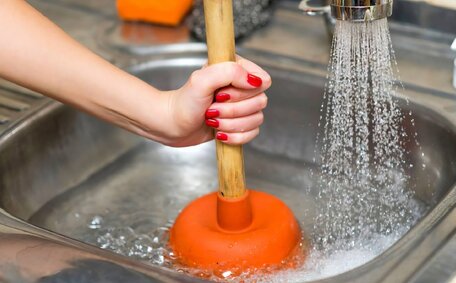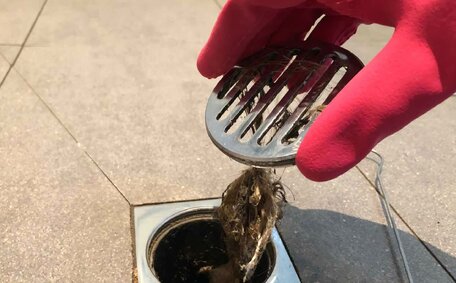Introduction to Pipe Relining and the Importance of Inspections
Pipe relining is a transformative plumbing technique that renews drainage systems from within through the installation of a protective epoxy barrier. This trenchless method is less invasive than traditional pipe replacements, avoiding the need to dig trenches through walls and floors. The seamless epoxy coating reinforces the existing pipe architecture, preventing leaks, blocking tree root ingress and restoring functionality.
Qualified personnel must perform pre and post-relining inspections to ensure the full benefits of pipe relining are realised. This allows for precise troubleshooting so problems can be addressed before applying the epoxy resin. Qualified personnel must perform pre and post-relining inspections to ensure the full benefits of pipe relining are realised.
Pre-inspection identifies issues like cracks, blockages and misalignments using camera technology. Post-inspection verifies that the coating has cured correctly, providing a smooth, continuous surface.
Understanding the role of detailed pipe examinations helps individuals recognise the importance of due diligence in protecting their property. We are committed to transparent assessments, outlining remediation requirements in detail before proceeding. If you have had relining performed or are interested in its suitability for your situation, contact Strathfield Plumbing to learn more about our inspection-focused approach.
Why Regular Pipe Inspections Are Critical Before and After Relining
Comprehensive inspections conducted both before and after relining are vital for ensuring the technique’s long-term effectiveness. Pre-relining inspection uses specialised CCTV cameras to internally survey pipes, locating cracks, blockages, misalignments and other issues. Identifying these problems early prevents them from compromising the relining process down the track.
Once relining is complete, post-inspection verifies that the smooth epoxy barrier has cured correctly so that the pipes can maintain their integrity. Gaps or imperfections risk eventual failure, so a final check by camera ensures watertightness. Together, these start to finish examinations uphold rigorous quality control standards, providing clients confidence about the workmanship.
We recommend pipe maintenance checks at least every five years, or sooner if you notice a decline in drainage performance. Just as routine servicing maximises the lifespan of cars, ongoing inspections help clear your blocked pipes and avoid expensive emergency repairs. Call us if any abnormalities are noted in your new pipework so they can be swiftly addressed.
Detecting potential issues early can save significant costs in the long run.
How Pre-Relining Inspection Helps Identify Issues to Address
Pre-relining inspection is an indispensable diagnostic step, using CCTV cameras to uncover any problems that could undermine long-lasting pipe renovations. Specialised plumbers methodically scrutinise the interior of drainage systems, locating cracked, misaligned or collapsed sections. Offsetting joints, holes and root ingress are also identified.
Pinpointing these abnormalities means we can strategize targeted solutions, preserving integrity around the damaged pipe areas during the epoxy installation. For example, a targeted pipe inspection informs the stabilisation of misalignments with anchors to avoid future sagging. Gaps are filled and cracks sealed to provide an even surface that bonds with the barrier coat.
A quality pre-inspection allows plumbers to address challenges effectively, ensuring tailored repairs that enhance functionality. Contact our team about scheduling this assessment before your relining.
What to Look for During a Pre-Inspection
When our technicians perform pre-relining pipe inspections, they methodically examine the interior using a CCTV drain camera to identify common issues including:
- Cracks or holes along the pipe length allowing water ingress
- Misaligned or offset pipe joints risking future buckling or detachment
- Corroded sections where the original structure has weakened
- Blockages from compacted debris, grease or tree roots
- Collapsed or compressed areas indicating ground movement external pressures
Identifying potential issues allows for precise troubleshooting and problem resolution before the epoxy resin installation. Understanding the condition your pipe enables precautions to be taken, preserving structural integrity around damaged regions.
Insightful inspections before and after relining equip clients with the necessary information to make informed decisions about their drainage system.
How Post-Inspection Verifies Relining Quality and Workmanship
Post-relining inspection, conducted a day after installation, is integral for verifying that professional standards have been upheld. Our plumbers rigorously check the inner epoxy layer to confirm the completion of work is uniform, smooth, and free from gaps or debris.
Ensuring uniform bonding with the existing pipe confirms quality craftsmanship and adherence to high standards. The continuity of the 2-3mm barrier coat protects against future leaks, as well as providing a slick surface that resists grime buildup.
If any imperfections are identified, we immediately arrange remedial repairs to meet stringent quality benchmarks. Post-inspections come with detailed reports and imagery of the relined pipe, evidencing the completed work. This transparent approach gives our clients confidence in the workmanship and ongoing functionality of their renewed drainage system.
What Post-Inspections Check for After Relining
Post-relining inspections examine the interior epoxy layer to verify professional workmanship and continuity. Technicians carefully check for:
- Proper liner shape without bulges or gaps that risk leaks
- A smooth 2-3mm barrier with no exposed original pipe sections
- Sealed joints between pipe fittings to prevent water ingress
- No lingering debris or blockages that could impede drainage
- Uniform bonding throughout with the liner sturdily fused to the old pipe
Verifying the application meets stringent benchmarks ensures clients gain maximum value. We stand behind quality inspections to uphold reliability and satisfaction.
Preventing Future Issues Through Regular Inspections
Regular drain inspections post-relining are essential to address issues promptly and prevent plumbing emergencies. Schedule maintenance checks every five years, utilising CCTV cameras for internal surveys of the pipe system.
These checks can detect early signs of wear, such as small cracks or minor blockages. This prevents progressive deterioration, avoiding leaks or collapse failures that necessitate urgent pipe repair. Essentially, addressing minor repairs now can forestall major plumbing issues down the track.
Drain inspections offer homeowners assurance about the hidden infrastructure’s ongoing integrity. For commercial premises, this preventative approach curtails potential disruption to business operations caused by unexpected shutdowns or flooding in our sewer systems.
As seasoned plumbers, we have seen firsthand how proactive maintenance protects property and mitigates expensive emergency callouts. Don’t wait until you have sewer line backflows or sinkhole formation indicating pipe failure. Book a check-up inspection now to keep drains working efficiently for decades to come.
CCTV and Other Advanced Inspection Tools
CCTV drain inspection is a critical tool for a complete assessment of drainage systems before relining. The waterproof cameras used can access pipe interiors inaccessible by traditional visual examination. Transmitting precise footage to an above-ground technician, the CCTV reveals cracks, holes, blockages, or joint misalignments.
We complement CCTV with other advanced diagnostic tools like electro-scan testing which can pinpoint breaches or moisture ingress issues. Hydro jetting may also precede inspections, using advanced equipment we host pipe cleaning sessions to propel pressurised water to clear heavy debris buildup obstructing camera access.
These technologies help pinpoint the exact location any extents of damage from within the pipe system.
For instance, employing anchors and supports to strengthen weak joints is crucial before encapsulating them in the lining.
Choosing the Right Inspector for Your Plumbing Needs
Selecting a qualified technician for a comprehensive plumbing inspection is critical for accurately assessing drainage systems before and after pipe relining jobs. Certified specialists have extensive training enabling comprehensive internal pipe analysis throughout the lining process. Our building inspection services benefit from licensed master plumbers who use their experience to assess damage and recommend suitable repairs.
We would advise engaging an inspector local to your area as they best understand regional piping challenges. For example, Strathfield Plumbing services Sydney suburbs dealing with complex, aged pipework vulnerable to cracks and tree root invasion. An inspector well-versed in these specific risks can detect damaged pipes and issues less apparent to generalists.
Always check for credentials such as licensing, insurance details, and referrals from previous clients who used our inspection services. Ensure they use the latest camera technologies for clear visibility along pipe lengths. Contact our team to learn about our transparent inspection process underpinning durable pipe revitalisation.
Ultimately the ideal inspector becomes a trusted advisor, leveraging their expertise to optimise drainage functionality for your property.
Consequences of Skipping Proper Inspections
Neglecting thorough pre and post-relining inspections risks seriously compromising the longevity and effectiveness of pipe renovations. Without identifying existing failures like cracks or blockages early, these problems in the sewer stormwater system get sealed within the epoxy liner only to resurface later.
Avoiding post-inspection leaves clients unable to verify workmanship quality so imperfections go undetected. This results in leaks arising from liner gaps or detachments that place immense pressure on surrounding structures.
Plumbing emergencies caused by undiscovered pipe defects incur major costs beyond just repairing damage internally. When severe water ingress or sewage backflows eventuate, consequential repairs like hacking into walls, excavating collapsed sections, and replacing water-logged floorboards quickly escalate.
Inferior irrigation due to unaddressed blockages or misalignments risks fouling nearby utility lines. Cross contamination of electrical and data conduits proves extremely hazardous and difficult to rectify.
Essentially overlooking rigorous inspections heightens the likelihood of segmentation failures over time. What presents initially as minor drainage issues can metabolise into catastrophic destruction of the very structures pipe relining aims to preserve.
Conclusion - Safeguard Your Plumbing Investment
In summary, comprehensive pre and post-relining inspections are integral for realising the longevity and value of pipe relining jobs. Thorough CCTV camera examinations enable early detection of issues like cracks, blockages and joint misalignments before they undermine pipe integrity. Pinpointing problems informs strategic troubleshooting so risks can be mitigated during the epoxy installation process.
Post-inspections verify stringent quality benchmarks have been achieved, with no gaps or imperfections compromising the protective liner. Together these start to finish checks uphold rigorous standards, providing clients confidence in the reliability of their renewed plumbing infrastructure.
Taking a proactive approach to upkeep for your pipework, especially beneath concrete slabs, is advisable. Seek professional drain inspections every five years or earlier if you notice drainage functionality declines. Contact our experienced Strathfield Plumbing team to find out how CCTV examinations and expert pipe relining can optimise the lifespan of your property’s plumbing for decades to come.
Minor repairs now prevent major disasters later.





